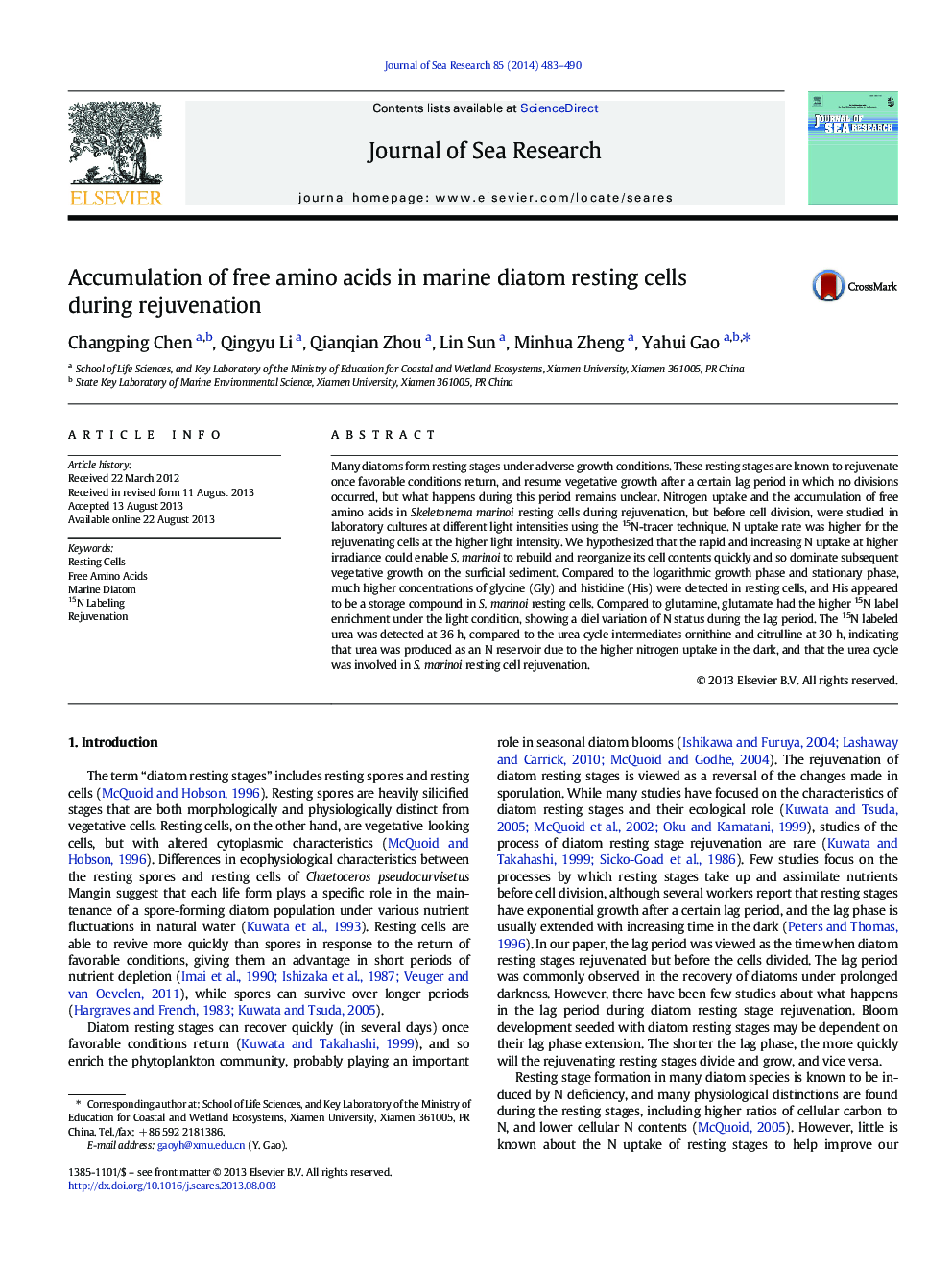| کد مقاله | کد نشریه | سال انتشار | مقاله انگلیسی | نسخه تمام متن |
|---|---|---|---|---|
| 6387445 | 1627489 | 2014 | 8 صفحه PDF | دانلود رایگان |
عنوان انگلیسی مقاله ISI
Accumulation of free amino acids in marine diatom resting cells during rejuvenation
ترجمه فارسی عنوان
انباشت اسیدهای آمینه آزاد در سلول های استقامتی دیاتومیک دریایی در طی جوان سازی
دانلود مقاله + سفارش ترجمه
دانلود مقاله ISI انگلیسی
رایگان برای ایرانیان
کلمات کلیدی
موضوعات مرتبط
مهندسی و علوم پایه
علوم زمین و سیارات
اقیانوس شناسی
چکیده انگلیسی
Many diatoms form resting stages under adverse growth conditions. These resting stages are known to rejuvenate once favorable conditions return, and resume vegetative growth after a certain lag period in which no divisions occurred, but what happens during this period remains unclear. Nitrogen uptake and the accumulation of free amino acids in Skeletonema marinoi resting cells during rejuvenation, but before cell division, were studied in laboratory cultures at different light intensities using the 15N-tracer technique. N uptake rate was higher for the rejuvenating cells at the higher light intensity. We hypothesized that the rapid and increasing N uptake at higher irradiance could enable S. marinoi to rebuild and reorganize its cell contents quickly and so dominate subsequent vegetative growth on the surficial sediment. Compared to the logarithmic growth phase and stationary phase, much higher concentrations of glycine (Gly) and histidine (His) were detected in resting cells, and His appeared to be a storage compound in S. marinoi resting cells. Compared to glutamine, glutamate had the higher 15N label enrichment under the light condition, showing a diel variation of N status during the lag period. The 15N labeled urea was detected at 36Â h, compared to the urea cycle intermediates ornithine and citrulline at 30Â h, indicating that urea was produced as an N reservoir due to the higher nitrogen uptake in the dark, and that the urea cycle was involved in S. marinoi resting cell rejuvenation.
ناشر
Database: Elsevier - ScienceDirect (ساینس دایرکت)
Journal: Journal of Sea Research - Volume 85, January 2014, Pages 483-490
Journal: Journal of Sea Research - Volume 85, January 2014, Pages 483-490
نویسندگان
Changping Chen, Qingyu Li, Qianqian Zhou, Lin Sun, Minhua Zheng, Yahui Gao,
